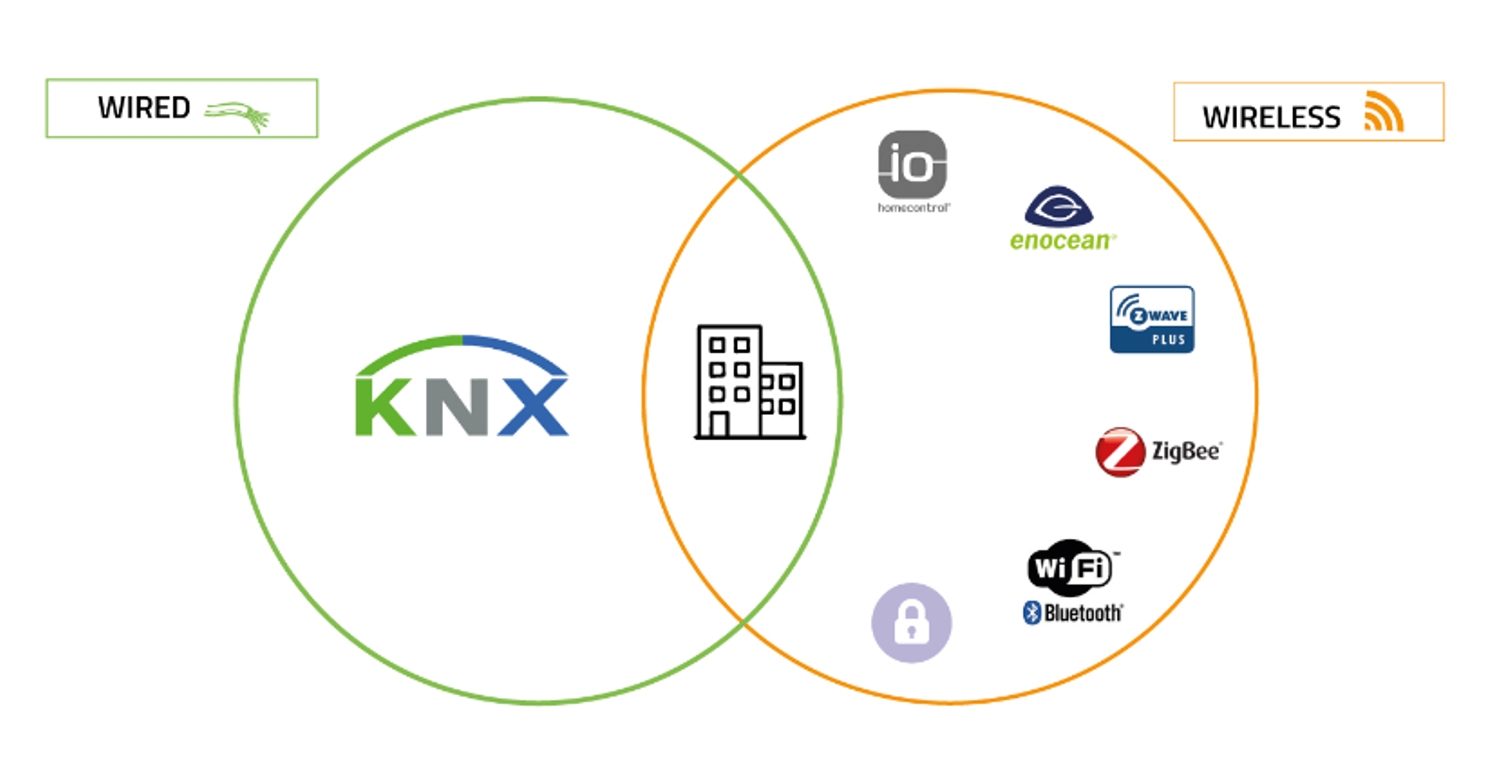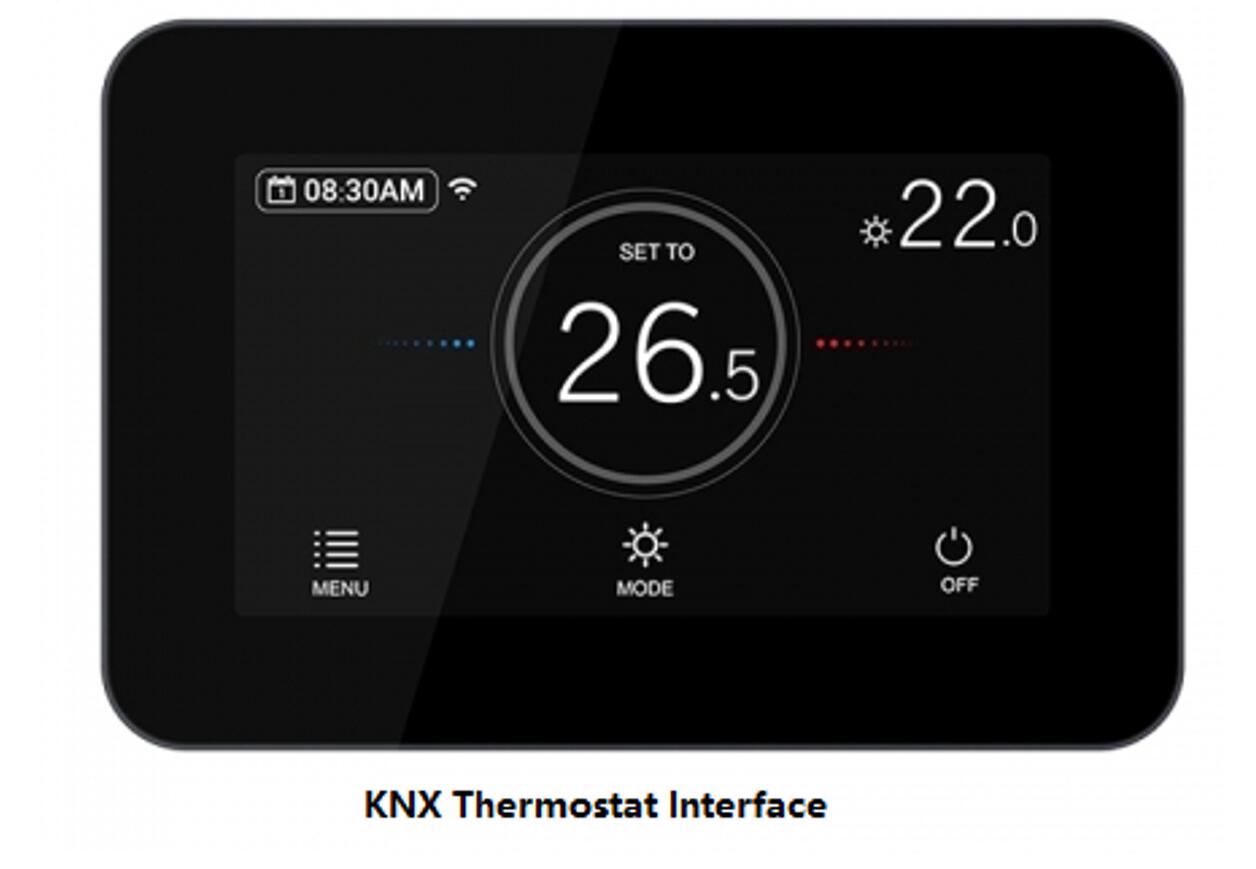There are two main options when considering KNX thermostats.
- Display&Control with integrated temperature sensor and regulation. This will output a signal based on the defined set point and temperature. The control may have a display to change the set point or alternatively this will need to be set from a separate user interface
- Thermostat with integrated temperature sensor only. This will need to be sent to a separate regulator, which will then output the demand signal. With no display a user interface will need to be provided elsewhere on the system.

The location of the thermostat can affect the operation of the system, however as this is generally outside of the integrators control it is possible to counter this by:
- Calibration - All KNX temperature sensors have the ability to offset the temperature. Once an accurate temperature from the room is received, the sensor value can be calibrated.
- External temperature sensor - This allows a temperature from the bus to be used to either average a room temperature or replace it. As most KNX switches now have a built in temperature sensor, you can read the temperature at each end of the room creating a more representative reading.

The majority of KNX heating regulators support 4 stages of heating and cooling:
– Heating Basic
– Sub Heating
– Cooling Basic
– Sub Cooling
Each stage has a separate output and defined thresholds for use.
If the temperature falls below the set point, less the additional band (20-2=18) then the radiators will be used until the temperature rises. In this way the room temperature will be constantly maintained in the most comfortable way possible.
There are various devices the can be used for external regulators including - manifold controls, logic modules, input devices and servers. In each case it is important to confirm the functionality as some are limited to only 2 stage i.e heating and cooling with no additional stages.